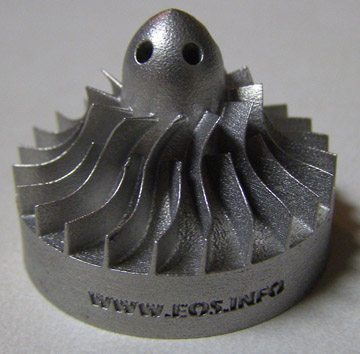In the world of 3D printing, materials are everything and the science is getting more advanced by the day.
The days where we just tried to replicate traditional manufacturing options are long gone. Now we are playing to the strengths of the additive printing process and finding new alloys and compounds. They are stronger, more flexible and simply better.
This is helping 3D printing move away from its roots as a rapid prototyping tool. Full production and manufacturing are tantalisingly close and so we’re not making templates anymore, we’re making a product that has to last.
Make sure you choose well
So choosing the right material and the right method of production is more important than ever, but that is more complex than it sounds. We’re making breakthroughs on a weekly basis and finding ways to improve the material performance with different compounds and even structures.
It’s an evolving science and two alloys that are almost the same can differ radically in the finished product, which is exciting and frustrating in equal measure.
Proto Labs has produced a handy guide, outlining the latest printing methods and the materials that are best suited for each specific job.
Design for the outcome, not the method
When you’re picking your material and production method, you normally have a particular outcome in mind. If you need a polyamide with a consistent tensile strength then a stereolithography photopolymer is a better option than a selective laser sintering PA. If you need the heat deflection qualities of an ABS, sintered nylon is your best bet.
So it’s important to define your mission critical properties and benchmarks before planning your project.
Here are some of the alternatives.
1. Direct Metal Laser Sintering
This technique uses powdered base metals to produce parts that are often stronger and better than wrought metal alternatives. It does, though, tend to produce different grain sizes and inconsistencies throughout the structure that can leave it with fault lines.
There are a number of things you can do to change the characteristics of the finished material, including heat treatment and hot isostatic pressing. Direct Metal Laser Sintering produces materials that do approach an isotropic state, but there is still some variance between the different axes.
Stainless steel is often used with this process and can be produced in two grades. 17-4 has a much greater yield strength and hardness than 316L. It is much less malleable, though, and does not resist corrosion as well. So there is a compromise.
Direct Metal Laser Sintered aluminium is roughly comparable to a 3000 series alloy, with far greater tensile and yield strength. Titanium has largely the same qualities as the cast alternative and has become the darling of the medical and aerospace industries thanks to its dependable results.
2. Selective Laser Sintering
This uses plastic powders, largely polyamide, which generally produces parts that are much tougher and can take a greater impact than the less consistent DMLS parts. Of course, there is always that compromise and the surface finish tends to be rougher with SLS, fine details don’t tend to work as well and the mechanical strength is lower with equivalent materials.
Once again there are things you can do with materials like Duraform HST Composite, a fiber-reinforced PA with higher strength and stiffness. It doesn’t take an impact as well, however, and minor chips can compromise its strength.
ALM PA 650 is another option that is a good general purpose PA, while PA 615-GS is loaded with glass filler. That makes it stiffer, but more brittle and heavier.
3. Stereolithography
This technique uses photopolymers and thermosetting resins that are cured with UV light. It’s a widely used technique that offers a large selection of colours and tensile strengths. Impact strength is often lower than that of injection-molded alternatives, but material science is progressing all the time and stereolithography is one of the areas that is constantly evolving.
It offers exceptional surface finishes and good resolution, so it’s the closest to injection molding in terms of the finished aesthetic.
Accura Xtreme White 200 offers a finish that sits between polypropylene and ABS, so it has a high impact strength and a much higher tensile strength than injection-molded alternatives.
Somos WaterShed XC 11122 offers almost complete transparency and low moisture absorption, as well as one of the highest tensile strengths of any 3D-printed thermoplastic. RenShape 7820, meanwhile, mimics the mechanical properties of ABS and offers a smooth and glossy surface that can be useful.
There are lots more options and we are coming up with more alternatives all the time. Technically you can look for a way to replicate the injection-molded or wrought alternatives, but you shouldn’t.
Instead you should keep abreast of the material science that is advancing at a frightening rate and then choose the best material and method for each particular job.
It is going to get way more complex and the material science side of 3D printing will get exponentially more advanced. With that level of complexity will come better results, so we say bring it on.



